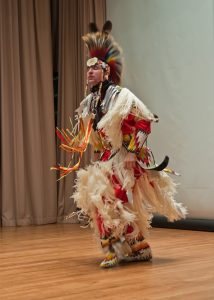The Arikara lived in the Great Plains and were considered partly nomadic, which means they did do some traveling during various seasons. The tribe lived in earth lodges in villages. During their travels, they would create what was called temporary shelters. In Arikara Indians Tribe History, each Arikara family had between thirty and forty dogs that were not only used for hunting but even used for transportation until they were introduced to horses during the 1600’s. Dogs were used to haul firewood by the women of the tribe, while the men used the dogs to haul about ¼ of a bison during seasonal hunts.
During the 18th century, The Arikara Indians Tribe History were hit with a smallpox epidemic. This illness decreased their tribe from 30,000 to around 6,000 which drastically changed their society.
Arikara Language
Since the Arikara was a member of the Caddoan family, the language was spoken was very close to the language of the Pawnee, even though the spoken word was not understood by both tribes as it was changed just enough to be unintelligible to both tribes. By the year 2007, there were only around ten Arikara that could speak the native tongue.
Arikara Traditional Foods
In the majority of cases, the Arikara were known as farmers and harvested such foods as squashes, corn, beans, and pumpkins. The tribe used these items to bargain with the other tribes such as the Cheyenne for such things as buffalo meat, skins, robes, guns, cooking items, and cloth. In the beginning, it was the women that did the trading. During the winter months, the males of the tribe did hunt buffalo and returned to the village in the spring before planting season.

Arikara Indians Tribe History and Culture
Their culture was mainly centered around corn in which an ear of corn was called Mother and many of the ceremonies used ears of corn that were preserved for generations and treated with reverence. The tribe gave offerings, had feasts, and sang ritual songs during the ceremonies. These ceremonies or rites were held when maize was planted and during the different stages as the corn grew. Other items used during the rites were gourd rattles and skins of certain birds.
The Arikara Indians Tribe History had a medicine man that also held ceremonies and rituals at which time the shrine and other exhibitions were open that were symbols of the forces that held the tribe together and made them fruitful and alive.
Sub-Tribes of the Arikara
The subtribes of the Arikara were not as organized but were considered organized confederacy of subtribes that had their own villages and names, with many that did not survive. During the 19th century, their subtribes the Hachepiriiinu translated to mean Young Dogs, Hia translated to mean Band of Cree, Hosukhanu translated to mean Foolish Dogs, Hosukhanukare Rihn translated to mean Little Foolish Dogs’, Sukhumvit translated to mean Black Mouths, Kaka translated to mean Band of Crows, Okos translated to mean Band of Bulls, and the Paushuk translated to mean Band of cut-throats’.
Today, you will find the Arikara are blended with the Arikara Nation and the Mandan Hidatsa home in New Town, North Dakota.
where did the Arikara tribe live, Arikara scalping, Arikara revenant, Arikara culture, what did the Arikara tribe wear, Arikara war, Arikara pronunciation, Arikara territory
